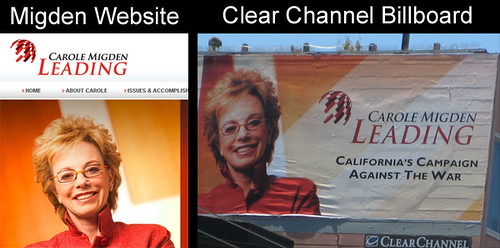by Randy Bayne
X-posted from The Bayne of Blog
“It’s not fair that people in the private sector are working well into their 60s and 70s to pay for extravagant pensions for public employees who can retire at 50 or 55,” said [Keith] Richman, a former Republican Assemblyman from Northridge who is now president of the California Foundation for Fiscal Responsibility. [Sacramento Bee, 6/22/07]
I would agree, if it were true. It sounds good to say something like this. You have a convenient villain – public employees – but they are hardly getting rich off their early retirements. Truth is, most early retirees have another source of income supplementing their reduced retirement income. Few public employees are receiving “extravagant pensions.”
Also untrue is the lie that “private sector [employees] are working well into their 60s and 70s to pay for extravagant pensions for public employees.” Last time I checked public employees were having retirement deducted from their pay, many in addition to Social Security. Some will be amazed to find out that public employees are also taxpayers, which means public employees pay for their own retirement.
But former Assemblyman Keith Richman isn’t about to let truth or a working system get in the way of his agenda. He is once again on the attack against those evil public employees who are only in if for themselves and wants to “reform” their pension system. He has filed an initiative to do just that.
You remember Richman. He teamed up with Arnold Schwarzenegger in 2005 in an attempt to put new public employees into risky 401(k)-style retirement accounts. His new 2007 version leaves employees in a defined benefit — good — plan but cuts retirement benefits and raises retirement age — bad. He also proposes changes that would base the pension payout on the highest consecutive five years of pay, instead of the one year or three years now in use — bad.
To make his plan more palatable to current employees he is reviving his divide and conquer tactic from 2005. His initiative would only apply to state and local government workers hired after July 1, 2009, forcing public employees into a divisive two-tiered system.
Earlier this year, Governor Schwarzenegger appointed a commission to look into public pensions. The commission is schedule to come out with recommendations in January.
“It seems that Richman is way out ahead of the governor on this one,” said Dave Low of the California School Employees Associaton, one of the Legislature’s appointees to the commission. “Why not wait?”
J.J. Jelincic, president of the California State Employees Association questioned the rationale for the initiative. He says CalPERS, the state’s biggest pension system is not severely underfunded.
Rather than waste time and money fighting public employees, Richman should be working with the Governor’s commission to study pensions and come up with a legislative solution. But that won’t happen. The commission isn’t likely to find any major problems with the current system, and that just doesn’t work into Richman’s plan.



 On July 20, 1997 my Aunt Jan and Uncle Phil Karlton were killed in a car accident in Italy along with Jan’s friend from college. A half-ton fully laden dump-truck plowed into their Saab at a notoriously dangerous intersection in Canelli, Italy. I was in high school and home for the summer. The phone started ringing that morning and non-stop for days. My mom, Phil’s sister, started coordinating the travels of their son David and my aunt Jo’s travels to Italy and communicating with Jan and Phil’s friends and family back in the states.
On July 20, 1997 my Aunt Jan and Uncle Phil Karlton were killed in a car accident in Italy along with Jan’s friend from college. A half-ton fully laden dump-truck plowed into their Saab at a notoriously dangerous intersection in Canelli, Italy. I was in high school and home for the summer. The phone started ringing that morning and non-stop for days. My mom, Phil’s sister, started coordinating the travels of their son David and my aunt Jo’s travels to Italy and communicating with Jan and Phil’s friends and family back in the states.